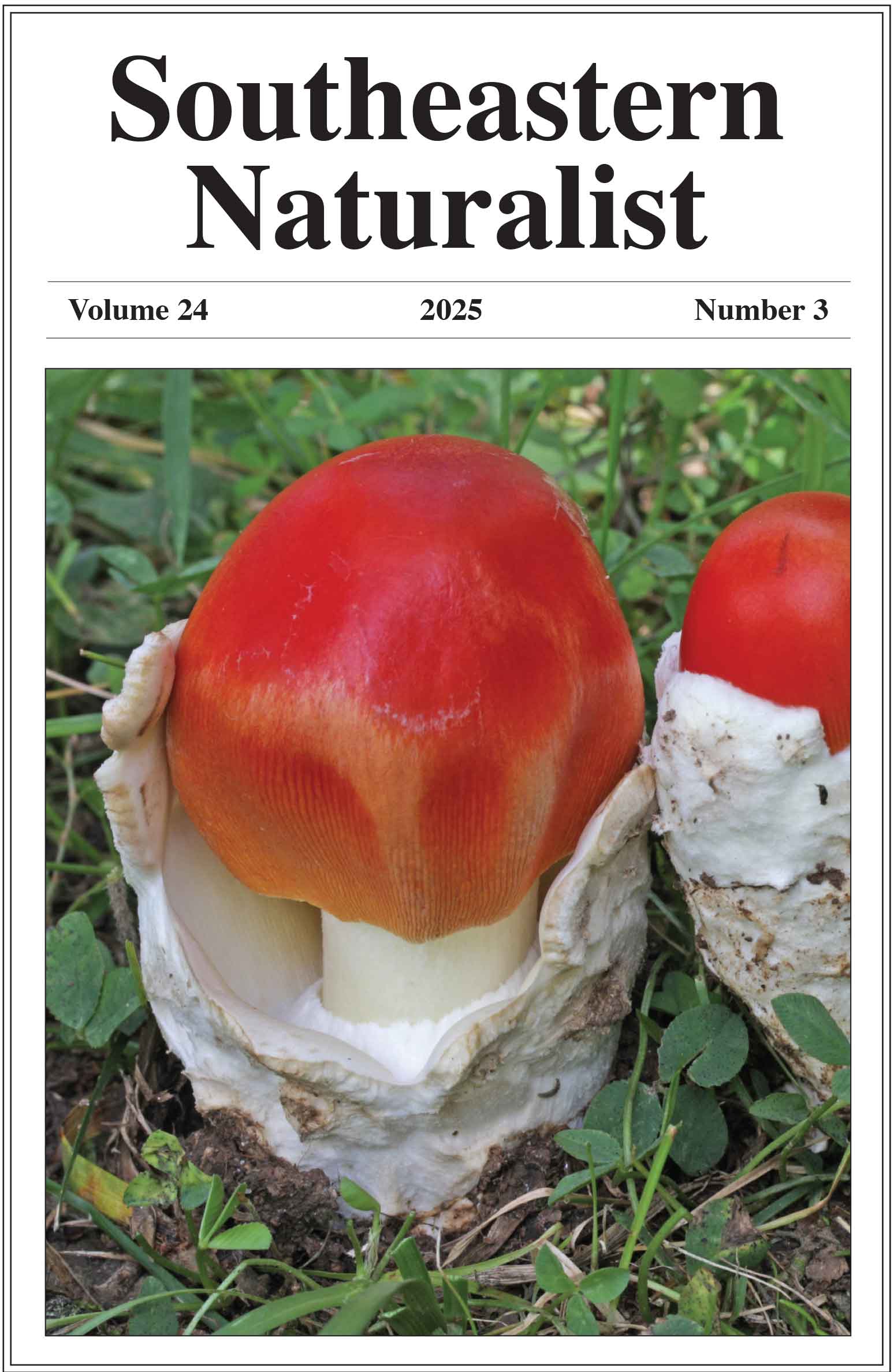Expanded Geographic Distribution of Multisystemic Enterococcosis Caused by Enterococcus lacertideformus in the Invasive Brown Anole (Anolis sagrei) in Florida
Shivam Shukla1,*, Ainsley Basham1,Ali Mulla1,J. Sean Doody1, and Robert J. Ossiboff2
1Department of Integrative Biology, University of South Florida, St. Petersburg Campus, 140 7th Avenue South, St. Petersburg, FL 33701. 2Department of Comparative, Diagnostic, and Population Medicine, College of Veterinary Medicine, University of Florida, Gainesville, FL 32611. *Corresponding author.
Southeastern Naturalist, Volume 23, Issue 4 (2024): N75–N81
First published early online: 4 December 2024
Abstract
Multisystemic enterococcosis, caused by the bacterium Enterococcus lacertideformus, is a potentially fatal infection affecting multiple lizard species. Initially described on Christmas Island in 2014, E. lacertideformus has since infected Anolis sagrei (Brown Anole) populations in Pinellas County, FL. In 2023, we found a Brown Anole exhibiting clinical signs consistent with multisystemic enterococcosis. Molecular and histopathological analyses confirmed the presence of E. lacertideformus infection. Thus, we report the first documented case of multisystemic enterococcosis in Hillsborough County, FL, a previously undocumented locale for this pathogen. This range expansion underscores the potential risk E. lacertideformus poses to Florida’s lizard populations, highlighting the necessity for increased surveillance and further research to better understand the transmission dynamics and ecological impacts of this emerging pathogen.
![]() Download Full-text pdf (Accessible only to subscribers. To subscribe click here.)
Download Full-text pdf (Accessible only to subscribers. To subscribe click here.)
Access Journal Content
Open access browsing of table of contents and abstract pages. Full text pdfs available for download for subscribers.
Issue-in-Progress: Vol. 24( 4) ... early view
Check out SENA's latest Monograph and current Special Issue in progress:













 The Southeastern Naturalist is a peer-reviewed journal that covers all aspects of natural history within the southeastern United States. We welcome research articles, summary review papers, and observational notes.
The Southeastern Naturalist is a peer-reviewed journal that covers all aspects of natural history within the southeastern United States. We welcome research articles, summary review papers, and observational notes.